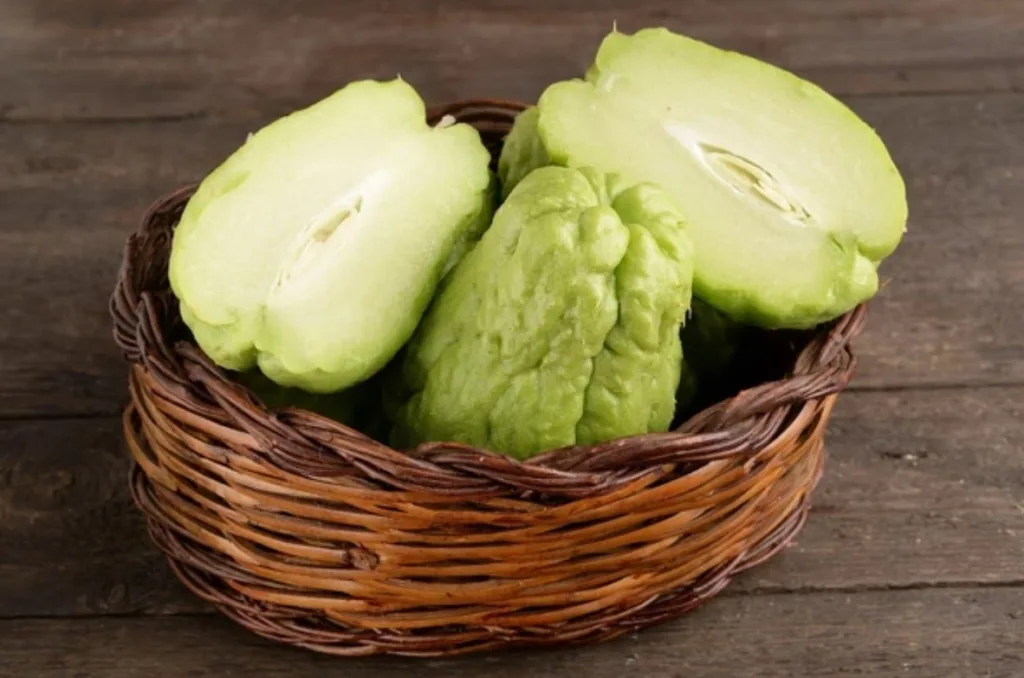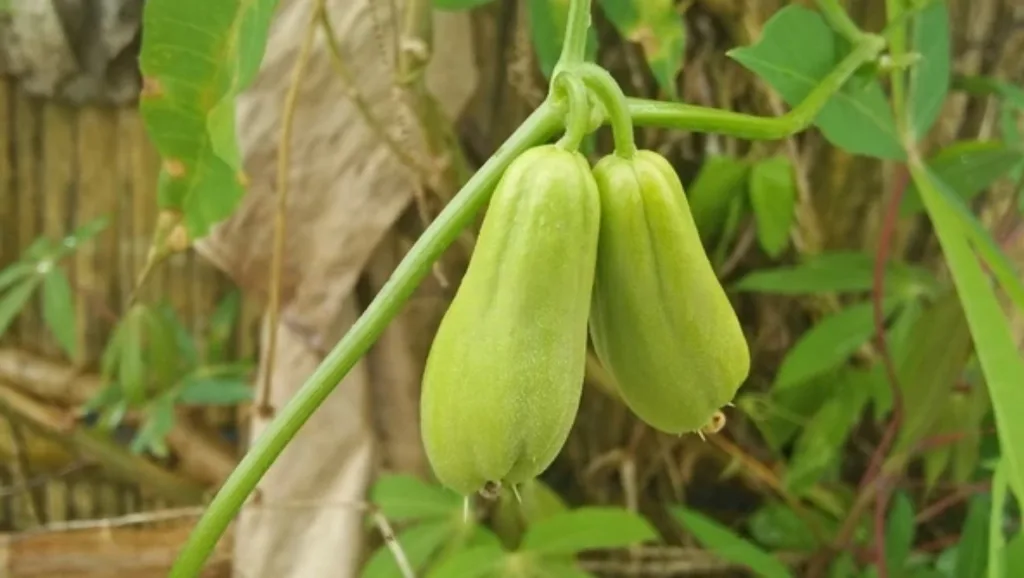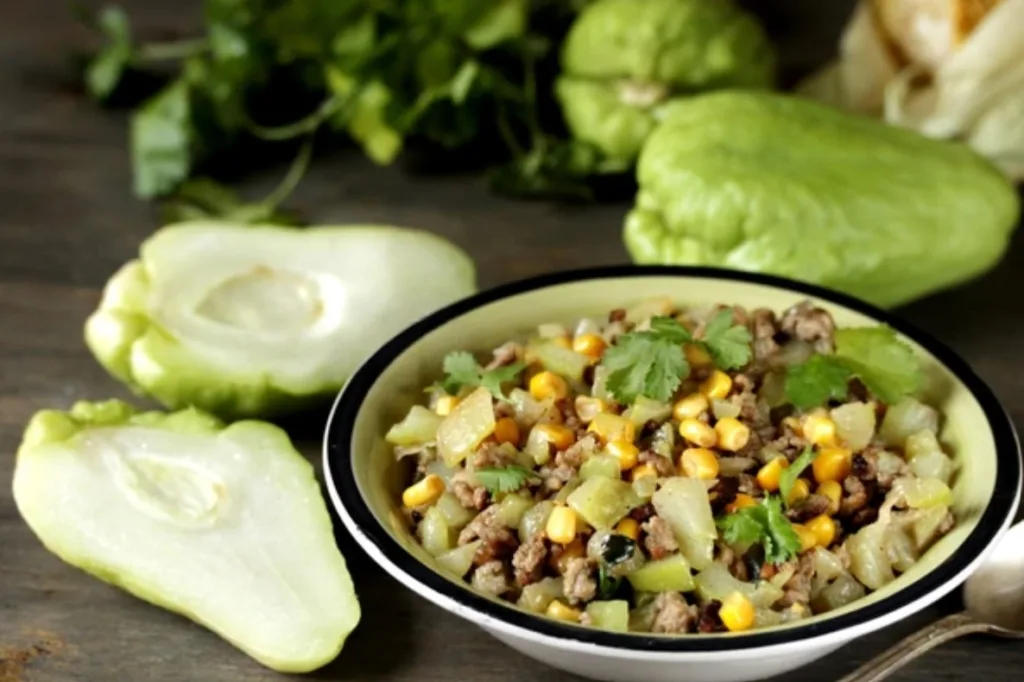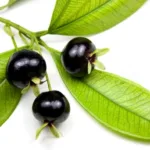What is Chayote?
Chayote, also known as mirliton or vegetable pear, is a versatile and nutritious vegetable native to Mexico. It has gained popularity worldwide due to its mild flavor and numerous health benefits. In this article, we will explore the various health benefits and uses of chayote, ensuring that you have all the information you need to incorporate this remarkable vegetable into your diet.
Nutritional Profile of Chayote
Chayote is a powerhouse of essential nutrients. It is low in calories and packed with vitamins and minerals. A single cup (about 132 grams) of raw chayote provides:
- Calories: 25
- Protein: 1 gram
- Fat: 0 grams
- Carbohydrates: 6 grams
- Fiber: 2 grams
- Vitamin C: 13% of the Recommended Daily Allowance (RDA)
- Vitamin B6: 5% of the RDA
- Folate: 7% of the RDA
- Potassium: 4% of the RDA
- Magnesium: 3% of the RDA
These nutrients contribute to the numerous health benefits that chayote offers.

Health Benefits of Chayote
1. Rich in Antioxidants
Chayote is a great source of antioxidants, which are compounds that protect the body from damage caused by free radicals. The antioxidants present in chayote, including vitamin C, flavonoids, and carotenoids, help reduce oxidative stress and lower the risk of chronic diseases such as heart disease and cancer.
2. Supports Heart Health
The potassium content in chayote plays a crucial role in maintaining heart health. Potassium helps regulate blood pressure by counteracting the effects of sodium. Additionally, the fiber in chayote can lower cholesterol levels, further contributing to cardiovascular health.
3. Aids in Weight Management
With its low calorie and high fiber content, chayote is an excellent addition to a weight management diet. The fiber reduces likelihood of overeating as it helps you feel full for longer. Its high water content also contributes to a feeling of fullness and helps maintain proper hydration.
4. Promotes Digestive Health
Chayote is rich in dietary fiber, which is essential for a healthy digestive system. Fiber aids in regular bowel movements, prevents constipation, and promotes the growth of beneficial gut bacteria. This, in turn, improves overall gut health and reduces the risk of gastrointestinal disorders.
5. Supports Immune Function
Vitamin C is known for its immune-boosting properties, and chayote is a good source of this essential vitamin. Regular consumption of chayote can help strengthen the immune system, making the body more resilient to infections and illnesses.
6. Helps Regulate Blood Sugar Levels
Chayote has a low glycemic index, meaning it has a minimal impact on blood sugar levels. This makes it a suitable food for individuals with diabetes or those looking to manage their blood sugar levels. The fiber content also helps slow down the absorption of sugar, preventing spikes in blood glucose.
7. Improves Bone Health
Chayote contains several nutrients that are beneficial for bone health, including magnesium, phosphorus, and vitamin K. Magnesium and phosphorus are essential for the development and maintenance of strong bones, while vitamin K helps regulate calcium, which is crucial for bone density. Regular consumption of chayote can help prevent bone-related conditions such as osteoporosis.

Culinary Uses of Chayote
Chayote is versatile fruit and thus can be used in a variety of dishes. Here are some popular culinary uses of chayote:
1. Raw in Salads
Chayote can be eaten raw, making it a refreshing addition to salads. Simply peel and slice the chayote thinly, and toss it with your favorite salad ingredients. Its mild flavor and crisp texture pair well with a variety of vegetables and dressings.
2. Sautéed or Stir-Fried
Chayote can be sautéed or stir-fried with other vegetables, meats, or tofu. Its ability to absorb flavors makes it a great addition to stir-fry dishes. Cook it with garlic, onions, and your choice of seasonings for a delicious and healthy side dish.
3. Boiled or Steamed
Boiling or steaming chayote is a simple and healthy way to prepare it. Once cooked, it can be seasoned with salt, pepper, and a drizzle of olive oil or butter. This method retains most of its nutrients while making it tender and flavorful.
4. Baked or Roasted
Chayote can be baked or roasted for a different texture and flavor. Slice the chayote into wedges, toss them with olive oil and your favorite spices, and bake until golden and crispy. This makes for a tasty and nutritious alternative to traditional potato fries.
5. In Soups and Stews
Chayote can be added to soups and stews, where it absorbs the flavors of the broth and other ingredients. It pairs well with chicken, beef, or vegetable-based soups, adding a nutritious boost to these comforting dishes.

How to Select and Store Chayote
When selecting chayote, look for firm, unblemished fruits that are pale green in color. Avoid chayote with wrinkled skin or soft spots, as these are signs of over-ripeness or spoilage.
To store chayote, keep it in a cool, dry place, away from direct sunlight. It can be stored at room temperature for up to a week or in the refrigerator for up to a month. If you have cut chayote, store it in an airtight container in the refrigerator and use it within a few days.
Growing Chayote at Home
Chayote is a relatively easy plant to grow at home, making it a great addition to your vegetable garden. Here are some basic steps to grow chayote:
- Select a Mature Fruit: Choose a mature chayote with a small sprout emerging from the fruit.
- Planting: Plant the whole fruit, sprout side up, in well-draining soil. Chayote prefers a sunny location and plenty of space to grow, as it is a vining plant.
- Watering: Water the plant regularly, keeping the soil moist but not waterlogged. Chayote requires consistent watering, especially during dry periods.
- Support: Provide a trellis or support for the vines to climb, as chayote can grow quite large.
- Harvesting: Chayote fruits can be harvested when they are tender and about 4-6 inches in length. Regular harvesting encourages the plant to produce more fruits.

Conclusion
Chayote is a nutritious and versatile vegetable that offers a range of health benefits. From its rich antioxidant content to its ability to support heart health, aid in weight management, and regulate blood sugar levels, chayote is a valuable addition to a healthy diet. It also improves bone health, making it beneficial for people of all ages. Its culinary versatility makes it easy to incorporate into various dishes, ensuring that you can enjoy its benefits in multiple ways. Whether you are looking to improve your overall health or add a new vegetable to your garden, chayote is an excellent choice.
Topics covered
- What is Chayote?
- What are key nutrients in Chayote?
- What are health benefits of Chayote?
- How to use Chayote?
- How to grow Chayote at home?








1 thought on “Chayote: The Superfood You Didn’t Know About”